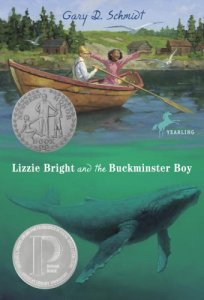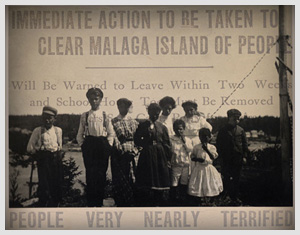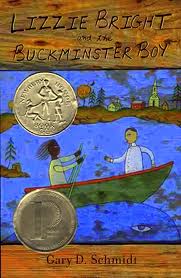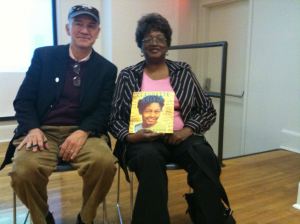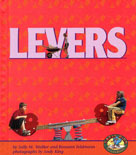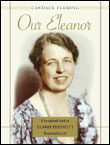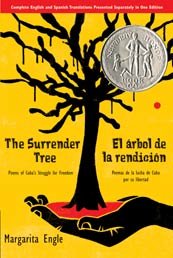BIBLIOGRAPHY
Schmidt, Gary D.. Lizzie Bright and the Buckminster boy . New York: Clarion Books, 2004.
PLOT SUMMARY
Turner Buckminster is having a terrible time adjusting to his new home in small town Phippsburg, Maine. The expectations are high for the 13 year old son of the newly recruited Reverend Buckminster. Turner soon learns that all eyes are watching and reporting his every move back to his father and before long Turner is convinced that he is as useless as the people of Phippsburg think he is. Meanwhile, Lizzie Bright Griffin from the islandof Malagasneaks her way along the shoreline of Phippsburg, careful not to be noticed as she collects clams for the day’s meal. After a chance encounter Turner and Lizzie become great companions and Turner is finally able to feel happy in his new home. Unfortunately their new friendship does not last long as the townspeople soon learn that Turner has been spending time with the “negroe girl” from Malaga. He is forbidden to see her or return to the island ever again. Even worse, Turner learns that the First Congressional Ministry intends to force the “shanties, thieves and lazy sots” off the islandof Malagabecause they are sure that the “shanties” (former slaves) are what are keeping tourists away from Phippsburg. Turner finds himself caught in a firestorm of hate, propaganda and love of his new friend. Turner stands up to the racism of the town, only to see Malagaburn to rubble and his father die in the heat of the controversy. Author Gary Schmidt tells a compelling story of innocence and virtue at the height of American racism in this historical fiction.
CRITICAL ANALYSIS
While the characters and storyline in Lizzie Bright and the Buckminster Boy are fictional, the story ofMalaga community and its trials with the city ofPhippsburg are true. Inhabitants of theMalagaIsland were indeed evicted from their homes and sent to a nearby insane asylum. Their homes and shacks were ordered to be burned by the then governor ofMaine.
Author Gary Schmidt does an excellent job of transforming this historical incident into a story that is relatable to adolescents. Turner, the minister’s son, has a character no different from that of many modern day 13 year old boys. Picked on by the local boys, the loneliness of moving to anew cityand the feelings of disappointment as a son are all traits that many young boys can relate to. Schmidt touches on the innocence of children at a time when hatred and discrimination were the norm.
“You never touch a girl before, Turner Ernest Buckminster? Or is it just that you never touched a girl with black skin before?”
“I never even talked to someone with black skin before.”
“Well,” she said, “never mind. You’re holding up your end just fine.”
Schmidt captures American dialect in 1912 through the voices of the characters in the story, a feature of the book that makes it an easy read for adolescents while still keeping true to the era. While racism is one of the key plot elements, Schmidt keeps it simple and straightforward without bogging the reader down with details.
Lizzie Bright and the Buckminster Boy is recommended for children in grades 6-9. Children should have some basic knowledge of the Civil War and the Civil Rights Movement in order to thoroughly understand the book.
“Gloriously figurative language…brilliantly evokes both time and place…both beautiful and emotionally honest, both funny and piercingly sad.” Kirkus Reviews, Starred
“an evocative novel…with fully developed, memorable characters…fascinating, little-known piece of history…will leave a powerful impression on readers.” School Library Journal, Starred
“historical incident ignites a rich novel…a drama that examines the best and worst of humanity.” Horn Book
CONNECTIONS
- Online radio and photo documentary: http://www.malagaislandmaine.org (includes original documents and photos)
- Teacher’s Guide available at: www. randomhouse.com
- Author Gary Schmidt’s website: http://www.houghtonmifflinbooks.com/schmidt
